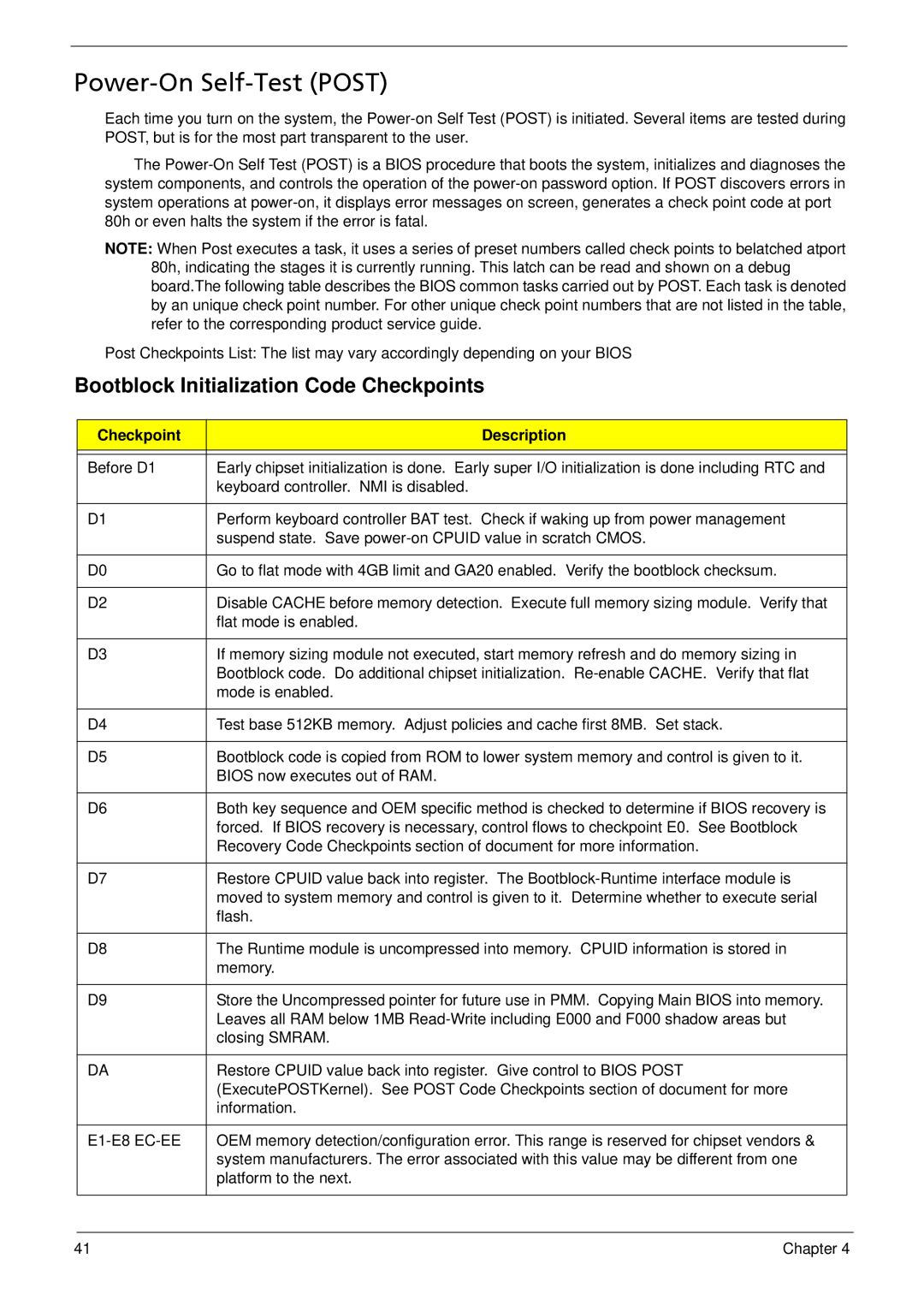
Power-On Self-Test (POST)
Each time you turn on the system, the
The
NOTE: When Post executes a task, it uses a series of preset numbers called check points to belatched atport 80h, indicating the stages it is currently running. This latch can be read and shown on a debug board.The following table describes the BIOS common tasks carried out by POST. Each task is denoted by an unique check point number. For other unique check point numbers that are not listed in the table, refer to the corresponding product service guide.
Post Checkpoints List: The list may vary accordingly depending on your BIOS
Bootblock Initialization Code Checkpoints
Checkpoint | Description |
|
|
Before D1 | Early chipset initialization is done. Early super I/O initialization is done including RTC and |
| keyboard controller. NMI is disabled. |
|
|
D1 | Perform keyboard controller BAT test. Check if waking up from power management |
| suspend state. Save |
|
|
D0 | Go to flat mode with 4GB limit and GA20 enabled. Verify the bootblock checksum. |
|
|
D2 | Disable CACHE before memory detection. Execute full memory sizing module. Verify that |
| flat mode is enabled. |
|
|
D3 | If memory sizing module not executed, start memory refresh and do memory sizing in |
| Bootblock code. Do additional chipset initialization. |
| mode is enabled. |
|
|
D4 | Test base 512KB memory. Adjust policies and cache first 8MB. Set stack. |
|
|
D5 | Bootblock code is copied from ROM to lower system memory and control is given to it. |
| BIOS now executes out of RAM. |
|
|
D6 | Both key sequence and OEM specific method is checked to determine if BIOS recovery is |
| forced. If BIOS recovery is necessary, control flows to checkpoint E0. See Bootblock |
| Recovery Code Checkpoints section of document for more information. |
|
|
D7 | Restore CPUID value back into register. The |
| moved to system memory and control is given to it. Determine whether to execute serial |
| flash. |
|
|
D8 | The Runtime module is uncompressed into memory. CPUID information is stored in |
| memory. |
|
|
D9 | Store the Uncompressed pointer for future use in PMM. Copying Main BIOS into memory. |
| Leaves all RAM below 1MB |
| closing SMRAM. |
|
|
DA | Restore CPUID value back into register. Give control to BIOS POST |
| (ExecutePOSTKernel). See POST Code Checkpoints section of document for more |
| information. |
|
|
OEM memory detection/configuration error. This range is reserved for chipset vendors & | |
| system manufacturers. The error associated with this value may be different from one |
| platform to the next. |
|
|
41 | Chapter 4 |
